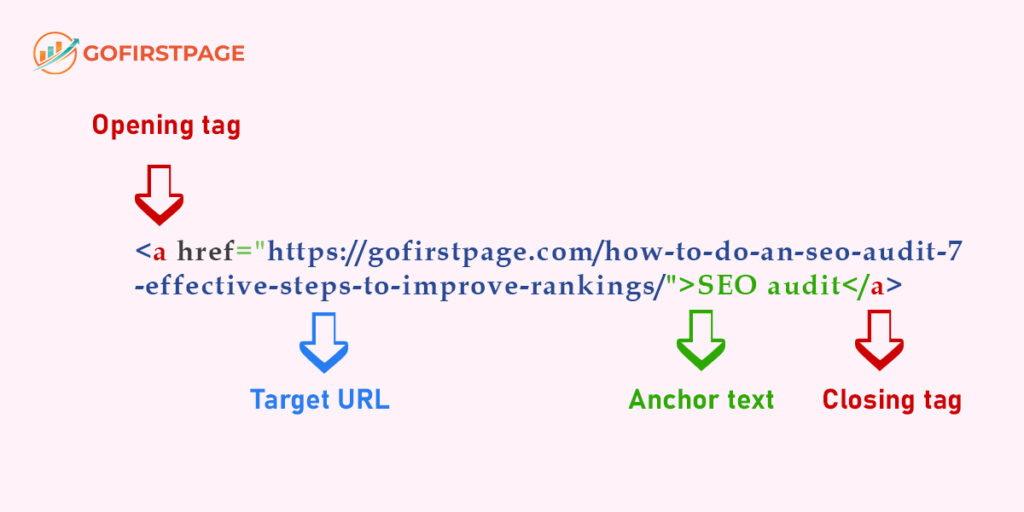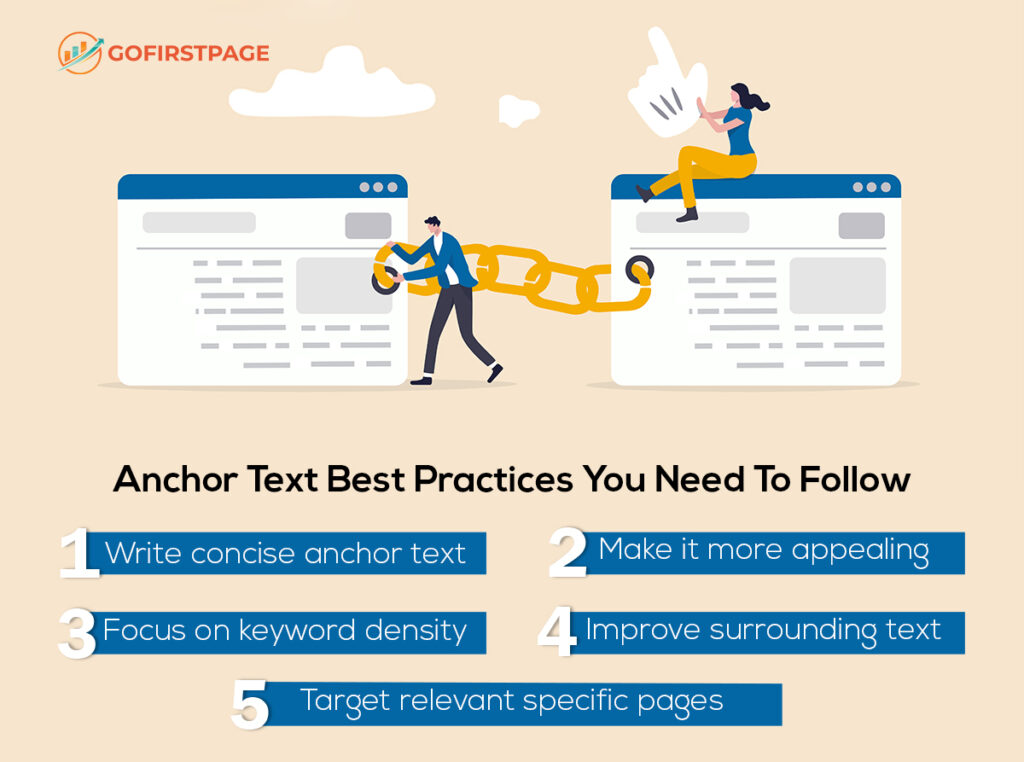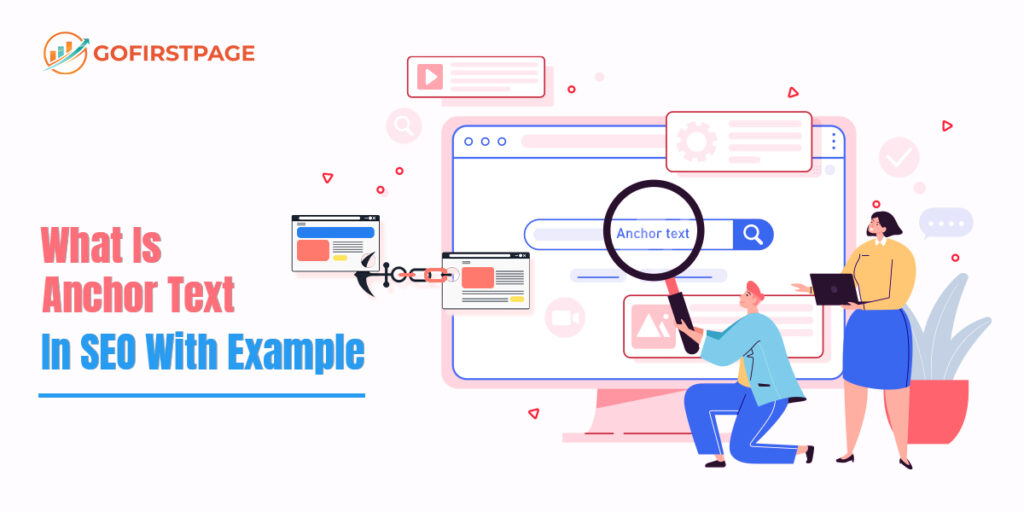In the intricate web of the internet, anchor text in SEO serves as the connecting links between web pages. It is like placing signposts on the digital highway, guiding users and search engines to the most critical and relevant content.
For those who might not be familiar with this concept! — Let’s say you’re an avid traveler planning your next big Hawaii vacation. You turn to the internet & read an article about the beautiful beaches of Hawaii.
In that article you just noticed, a phrase says, “One of the most stunning beaches in Hawaii is Waimea Bay.” The words “Waimea Bay” are underlined, highlighted, and clickable. When you click on them, you’re taken to a page with more detailed information about Waimea Bay—its history, adventurous activities, breathtaking views & more. These clickable words are what we call “anchor text.”
In this blog, we’ll delve into the detailed concept, which includes what is anchor text in SEO with examples, what are types of anchor text, what best practices you need to follow, and more. Let’s get started…
What is Anchor Text in SEO?
The anchor text in SEO is the visible text that can be clicked on in a hyperlink. It is typically a different color than the surrounding text and maybe underlined. It looks like this on a page:

Anchor text provides context for the link and sets your readers’ expectations that they’ll definitely get something relevant and informative regarding the context. The better you do anchor text optimization, the easier it will be for people who want to navigate your website and for search engines like Google to understand what the related page you’re linking to is about.
In the source code, it’s reflected in the following way:

See the detailed anchor text code structure below:

Types of Anchor Text You Can Apply
There are several types of anchor texts. Some are more SEO-friendly than others, so examine the following anchor text types:
— Partial-Match Or Phrase-Match:
The anchor text includes other words besides a keyword or variation of the keyword the linked-to page targets. Example: SEO for a search engine like Bing is slightly different than for Google (where SEO for Bing is a keyword). Check out GFP’s guide to internal strategies (here, “internal best practices” is the target keyword).
— Contextual Anchor Text:
That’s not a keyword-focused or exact make anchor; it’s tied to the context that is easy to distinguish – even if you remove the link. For example, If you’ve spotted some underperforming pages, think of following the basic rules of SEO audit & optimization.
— Image Anchor Text:
While technically it is not a text, it is the image’s alt text that acts as the anchor text for SEO optimization. When you link an image, the alt text of the image acts as the anchor text. So, if the image doesn’t load, its anchor text can still be clicked. You can get complete information on how alt tags help SEO as anchor text for search & users that visit your site.
— Generic Anchor Text:
Generic anchor hyperlink doesn’t include any keywords or points of reference. Click here, this, official link, view more, more info, find more info now & more – these are all the common words that do not describe the linked page. Users must read the surrounding text to determine what it’s about. For example, what is NAP in SEO? Read more about it here.
— Page’s title Anchor Text:
That’s the situation when the page’s full title is used as an anchor. It’s often used for providing extra reading, related resources, etc. Example: Here is our article on 8 HTML tags essential for SEO, or read our article on what is thin content & how it impacts SEO: a comprehensive guide
— Exact Match Anchor Text:
The anchor text exactly matches your target keyword the page it is linking to is targeting. Example: Breadcrumbs in SEO are needed to get your website navigation proper.
— Naked URL Anchor Text:
In this case, the anchor hyperlink is the URL link. Example: If you need 100 Dollars SEO audit packages, go to (https://gofirstpage.com/pricing-tables/).
— Branded Anchor Text:
In this case, a brand name (or branded phrase) is used as an anchor with additional keywords or contextual information. Example: Hire GoFirstPage SEO experts for professional SEO audits and research.
— Call to action Anchor Text:
When a CTA is used as an anchor text to promote the services. For example: Get top E-Commerce SEO services now. Here, an SEO company offers its services through anchor text hyperlinks.
Anchor Text Best Practices You Need To Follow

1- Write concise anchor text
While there isn’t a specified length limit for anchor text, keeping your link text as succinct as possible is a good idea. Focus on what word or phrase would encourage users to click on a link. You can also connect with an SEO consultant for small businesses if you need any SEO-related assistance.
2- Make it more appealing
Boring & generic anchors won’t do much. What’s the point of interlink if nobody wants to click on it? Therefore, avoid using more naked links and generic anchor texts & try to make the text more enticing.
3- Anchor text keyword density
With the Penguin algorithm update, Google began looking more closely at anchor text keywords. If too many of a website’s inbound links contain the exact anchor text, it can appear suspicious. Don’t overdo it with keyword-heavy internal links. If too many hyperlinks to a page use the same anchor text optimization, Google might sense spammy behavior.
Recommended Blog: Why Is Keyword Research Important For SEO? Things You Need To Know
4- Pay Attention to Surrounding Text
The anchor text surrounding the anchor hyperlink can help the reader comprehend the link’s context. It also provides more context for search engines.
5- Target specific pages for relevance
Search engines have started identifying more metrics for ranking. Link relevancy is a metric that stands out from the rest because it looks at how closely the topic on page A is related to page B. The page is more likely to rank if one links to the other. In this case, you can focus on SEO services near me pages that can target your local-specific pages.
The Bottom Line
Keyword-rich anchor text is essential to any effective SEO strategy. When implemented correctly, it can significantly enhance the ranking and visibility of a website. However, excessive optimization of anchor text can result in penalties from Google. Therefore, it is recommended to use keyword-rich anchor text sparingly to ensure that the rest of the text is organic and informative. The following tips should be considered when creating anchor hyperlinks for a website for internal and external linking. You can refer to web content writing services to make your strategy more successful.
Frequently Asked Questions
What are anchor text examples?
For example: “WordPress development services” links to a page about SEO services. Anchor text includes a variance of the same keyword on the linked-to page. For example: “Google My Business optimization services” links to a page about GMB. Use of a brand name in the anchor text.
What is the anchor text, in simple words?
An anchor or link text is a link’s visible, clickable text. It usually appears in a different color, such as blue, than the surrounding text and is often underlined. Good anchor link text tells the reader what to expect if they click it.
What is anchor text vs. backlinks?
A backlink is a link from another website that links to yours. The backlink’s anchor text is the same as what other websites are using to link to yours. Search engines use these backlinks to figure out the most important keywords for a web page to rank for.
What is the difference between keyword and anchor text?
The most significant difference is that anchor text is used in links that take readers to different, specific pages on your website or another site. Keywords are the words that consumers type into their browsers to find a website initially.
What is a rich anchor text?
Rich anchor text is just text that contains the keywords you want people to link to. It’s usually the ones you want to rank for, so don’t go overboard with it. People don’t link to your content that way, and Google might think your content is too optimized.
Why is anchor text important for SEO?
Anchor text is crucial in SEO, telling Google what the page is about. Anchor text is used as a ranking factor by Google and is part of several Google patents. A bad SEO practice is not using anchor text or a generic anchor text like “click here”.
How do you optimize an anchor text?
The easiest way to optimize your anchor text for SEO is to use descriptive keywords to describe the page/idea you’re linking to. However, SEO can over-optimize your anchor text, so focus on the correct methods to optimize it. Need help from SEO experts? Contact professional now @+1 (917) 277-7780




